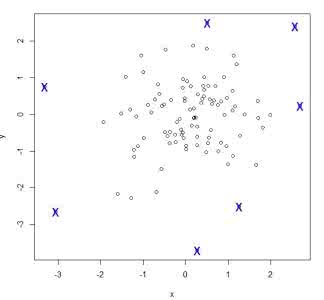We present the mathematical analysis of the Isolation Random Forest Method (IRF Method) for anomaly detection, introduced in {\sc F.~T. Liu, K.~M. Ting, Z.-H. Zhou:}, {\it Isolation-based anomaly detection}, TKDD 6 (2012) 3:1--3:39. We prove that the IRF space can be endowed with a probability induced by the Isolation Tree algorithm (iTree). In this setting, the convergence of the IRF method is proved, using the Law of Large Numbers. A couple of counterexamples are presented to show that the method is inconclusive and no certificate of quality can be given, when using it as a means to detect anomalies. Hence, a more robust version of the method is proposed whose mathematical foundation is fully justified. Finally, numerical experiments are presented to compare the performance of the classic method with the proposed one.
翻译:我们展示了用于异常现象检测的孤立随机森林法(IRF方法)的数学分析,该方法引入于 ~T. Liu, K~M. Ting, Z.-H. Zhou:}, ~Isetation-异常现象检测}, TKDD 6 (2012) 3:1--3:39。我们证明隔离树算法(iTree)可以给IRF空间带来一个概率。在这种背景下,使用大数字法证明了IRF方法的趋同。提供了一些对应示例,以表明该方法在用作异常现象检测手段时是没有结果的,而且没有提供质量证书。因此,提出了一种更可靠的方法版本,其数学基础是完全合理的。最后,进行了数字实验,以比较经典方法的性能与拟议方法的性能。




